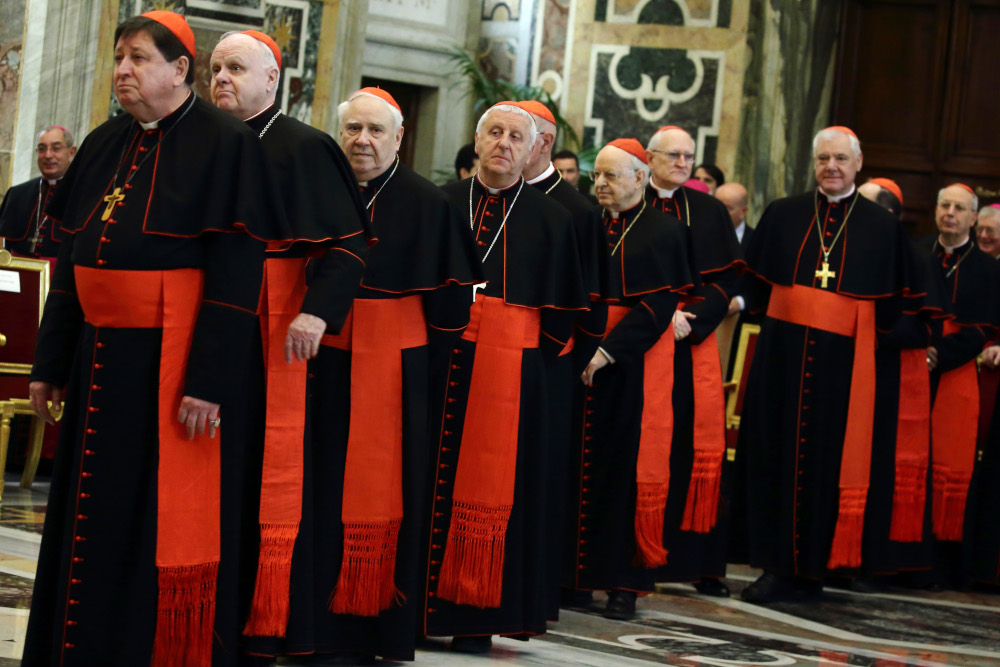Trump's Economic Agenda: Who Bears The Cost?

Table of Contents
Donald Trump's economic agenda, characterized by significant tax cuts, deregulation, and protectionist trade policies, sparked considerable debate. While presented as a boon for economic growth and job creation, a closer examination reveals a complex reality where the costs were not evenly distributed. This article delves into the winners and losers of Trump's economic policies, analyzing who ultimately bore the brunt of these decisions.
The Impact of Tax Cuts
Benefits for Corporations and the Wealthy
The centerpiece of Trump's economic plan was the Tax Cuts and Jobs Act of 2017, which dramatically slashed the corporate tax rate from 35% to 21%. This significant reduction provided a substantial windfall for large corporations and significantly boosted the after-tax income of high-income earners. Statistics reveal a disproportionate benefit: the top 1% saw a considerable increase in after-tax income, while the gains for the lower and middle classes were far more modest.
- Significant corporate tax rate reduction: This fueled corporate profits and stock buybacks, enriching shareholders.
- Increased capital gains taxes: While individual tax rates remained largely unchanged for many, capital gains taxes, benefiting primarily the wealthy, remained low.
- Pass-through business deductions: These provisions disproportionately benefited high-income individuals operating businesses structured as pass-through entities.
Limited Benefits for the Middle Class
While the tax cuts offered some temporary benefits to the middle class, such as increased standard deductions, these were largely overshadowed by the long-term structural issues exacerbated by the legislation. Many of the middle-class tax benefits were temporary, expiring after a few years, leaving many families with little to no long-term relief. Critics argued that the tax cuts widened income inequality, offering minimal long-term improvement to middle-class income and exacerbating existing economic disparities.
- Temporary tax cuts: Many benefits for the middle class were designed to expire, leading to a tax increase in subsequent years.
- Lack of significant wage growth: Despite the tax cuts, wage growth for the middle class remained stagnant or slow in many sectors.
- Increased national debt: The tax cuts contributed significantly to an increase in the national debt, raising concerns about future economic stability.
Trade Wars and Their Consequences
Impact on American Farmers and Manufacturers
Trump's administration initiated several trade wars, imposing tariffs on goods imported from various countries. This protectionist approach, while intended to protect American industries, resulted in significant negative consequences for certain sectors. American farmers, in particular, suffered greatly from retaliatory tariffs imposed by other nations on agricultural exports. The steel and aluminum industries, while initially benefiting from tariffs, experienced negative downstream effects due to increased input costs and reduced export markets.
- Retaliatory tariffs on agricultural products: American farmers faced reduced export markets and lower prices for their goods. Examples include soybeans and pork.
- Increased costs for businesses: Tariffs on imported materials raised production costs for many manufacturers, leading to reduced competitiveness.
- Job losses in export-oriented sectors: The trade wars resulted in job losses in industries heavily reliant on international trade.
Increased Prices for Consumers
The trade wars led to higher prices for consumers on a variety of goods. Tariffs on imported goods increased the cost of everything from clothing and electronics to automobiles and furniture. This rise in prices contributed to inflation and reduced consumer spending, impacting economic growth.
- Higher prices for imported goods: Tariffs directly increased the cost of imported products, transferring the burden to consumers.
- Reduced consumer purchasing power: Increased prices diminished consumer purchasing power, leading to a decrease in overall demand.
- Inflationary pressures: Tariffs contributed to inflationary pressures, eroding the real value of wages and savings.
Deregulation and its Unintended Consequences
Environmental Costs
Trump's administration significantly rolled back environmental regulations, arguing that these regulations hindered economic growth. However, this deregulation resulted in significant environmental costs. The weakening of environmental protection measures led to increased pollution, accelerated climate change, and damage to natural resources.
- Rollback of clean air and water regulations: Relaxed environmental standards led to increased air and water pollution.
- Reduced protection for endangered species: Weakened regulations threatened the survival of several endangered species and their habitats.
- Increased greenhouse gas emissions: Deregulation contributed to a rise in greenhouse gas emissions, exacerbating climate change.
Risks to Consumer and Worker Protection
The deregulation extended beyond environmental issues; it also impacted consumer and worker protection. The weakening of consumer protection laws increased the vulnerability of consumers to fraudulent practices and unsafe products. Simultaneously, the reduction in workplace safety regulations raised concerns about increased workplace hazards and injuries.
- Weakening of consumer protection agencies: Reduced enforcement of consumer protection laws led to increased vulnerability for consumers.
- Reduced workplace safety regulations: This led to increased risks of workplace accidents and injuries.
- Increased financial risk for consumers: Deregulation in the financial sector increased the risk of financial crises and consumer exploitation.
Conclusion
Trump's economic agenda resulted in a significant redistribution of wealth, primarily benefiting corporations and the wealthy. While some sectors experienced short-term gains, the long-term costs, including increased inequality, trade disputes, and environmental damage, fall disproportionately on the middle class and marginalized communities. Understanding the complexities of Trump's economic legacy requires a thorough examination of its impact on different segments of society. Continue your research on Trump's economic policies and the unequal distribution of its costs to form your own informed opinion. Further investigation into the winners and losers of this economic agenda is crucial to understanding its lasting impact.

Featured Posts
-
 Premium Car Sales In China A Look At Bmw Porsche And The Competition
Apr 22, 2025
Premium Car Sales In China A Look At Bmw Porsche And The Competition
Apr 22, 2025 -
 China Market Troubles Bmw Porsche And Beyond
Apr 22, 2025
China Market Troubles Bmw Porsche And Beyond
Apr 22, 2025 -
 Pope Francis A Legacy Of Compassion 1936 2024
Apr 22, 2025
Pope Francis A Legacy Of Compassion 1936 2024
Apr 22, 2025 -
 Us And South Sudan Partner To Manage Deportees Return
Apr 22, 2025
Us And South Sudan Partner To Manage Deportees Return
Apr 22, 2025 -
 The Growing Movement To Break Up Google Examining The Arguments
Apr 22, 2025
The Growing Movement To Break Up Google Examining The Arguments
Apr 22, 2025
